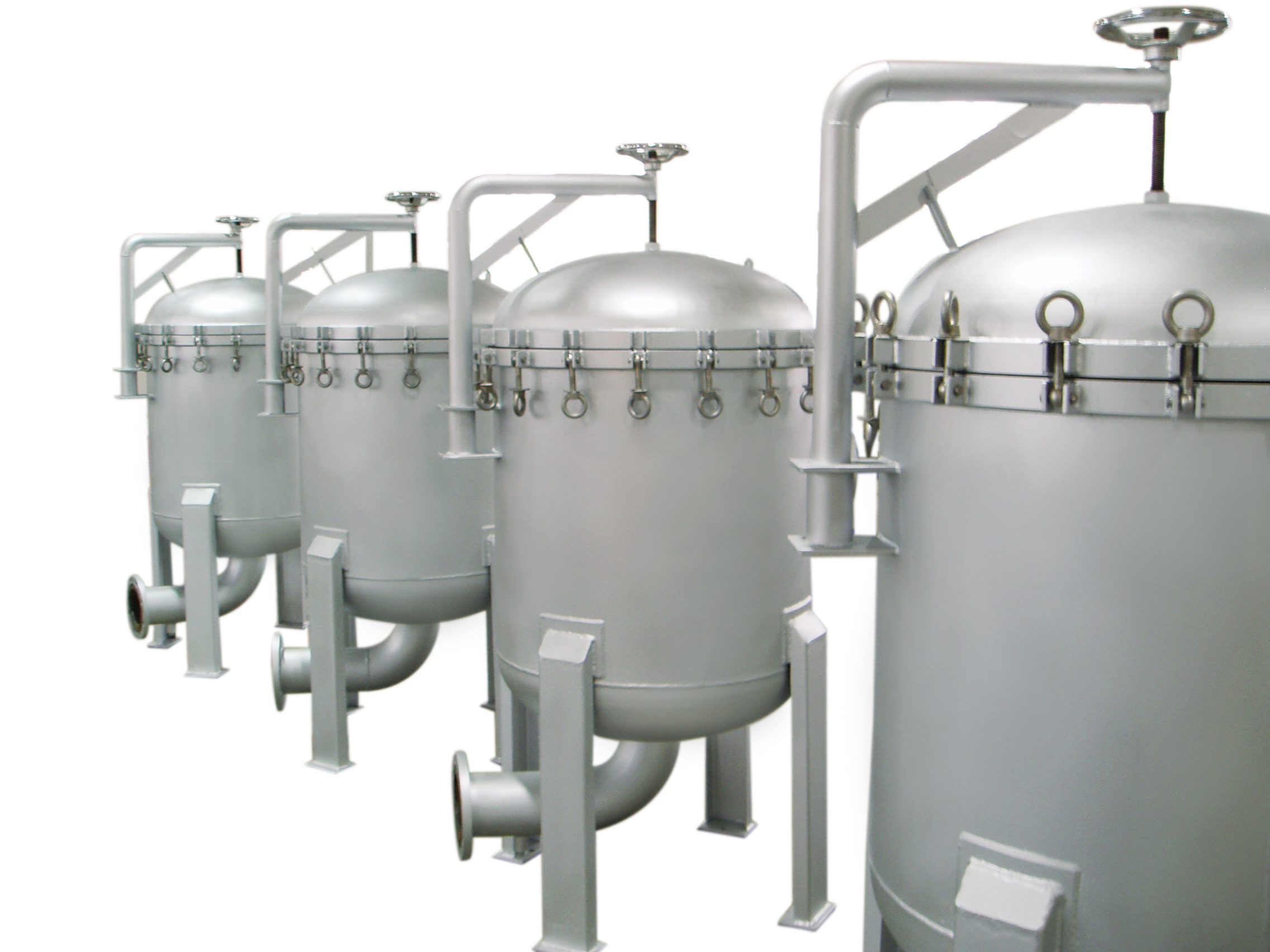What Is Filter Housing?
Filter housings are containers designed to hold replaceable cartridges, elements, bags, or media. They can accommodate one or multiple filters at different pressures, allowing for high flow rates and extended service life while ensuring effective fluid filtration.

The design of a filter housing depends on the following factors:
--Flow Rate: The desired rate at which fluids need to be processed determines the appropriate size and type of filter housing.
--Operating Pressure: The system's operational requirements and conditions dictate the selection of a suitable filter housing capable of withstanding specific pressure levels.
--Operating Temperature: Filter housings must be designed to handle the temperature range in which they will operate effectively without compromising their structural integrity.
--Filtration Rating: The desired level of filtration efficiency dictates the choice of an appropriate filter housing that can achieve the required filtration rating.
--Total Suspended Solids (TSS): The concentration and nature of suspended solids in the fluid being filtered influence the design considerations for selecting an optimal filter housing solution.
--Cost: Factors such as material selection, manufacturing complexity, maintenance requirements, and initial investment impact cost considerations when designing a filter housing system.
--Service Time: The expected duration between cartridge replacements or maintenance intervals influences decisions regarding durability and ease-of-access features during the design phase.
By carefully considering these factors during the design process, engineers can create efficient and reliable filter housings that meet specific industrial needs for proper fluid filtration。
What are the types of filter housing?
Filter housings can be divided into the following categories according to different forms:
--Self-cleaning filter housing
The filter elements can be divided into the following categories:
--stainless steel 304 316 316L 304L filter cartridges
--Media filter cartridges
--Melt-blown filter cartridges
--Filter bags
--others
How can you Test if Filter Housing is Leaking?
Usually, the filter housing will be tested for leaks before leaving the factory. If the customer needs it, the test inspection video and inspection report can be sent, or the customer can via the bubble-tight helium leakage test for self-testing.
1. Connect the filter housing to a gaseous helium tank.
2. Submerge the filter housing underwater and continuously increase the pressure of the helium supply.
3. Conduct this test at 25%, 50%, 75%, and 100% of the maximum working pressure that is allowable.
Continuously observe the production of the bubbles.
4. When the bubble production happens for over one minute, this confirms that the filter housing is leaking.
What will Influence the Dimension of Filter Housing?
The performance of a filter housing is directly influenced by the filter housings size it accommodates.
Therefore, larger filter housings are expected to deliver better performance.
When deciding on the appropriate stainless steel filter housing size, several factors should be taken into account.
Firstly, consider the intended application and process requirements. The volume of fluid or gas to be filtered per unit of time will help determine whether a larger or smaller-sized housing is needed.
Additionally, it is crucial to consider space constraints and installation requirements. Measure available space carefully to ensure that there is sufficient room for both equipment placement and maintenance access. Consider other components within your setup that may affect where you can install your stainless steel filter housing effectively.
Another factor to consider when choosing stainless steel filter housing size is future scalability needs. If there are plans for expansion or increased production down the line, it may be wise to invest in a slightly larger housing than currently required so that it can accommodate future growth without needing replacement.
Furthermore, keep in mind any regulatory standards specific to your industry while selecting stainless steel filter housings sizes. Compliance with these regulations ensures that your filtration system meets necessary quality standards while maintaining operational efficiency.
In conclusion, selecting an appropriate stainless steel filter housing size requires careful evaluation of application requirements, available space limitations, future scalability needs, and adherence to industry-specific regulations.
By considering these aspects comprehensively, you are more likely to choose a high-quality filtration system capable of meeting both current and future demands efficiently
Filter Housing Application?
Filtration Systems and Filter Housings applications include fuel filter and oil filter housings, machine coolant filtration housings, and sanitary filter housings. Application-based Liquid, Gas, and, Water Filter Housings provide the protection and filtration your project requires.
A broad array of applications engages the industry stainless steel filter housings.
The following is a list of fields where these devices are employed:
Water Treatment RO Prefiltration
Oil and Gas Refineries
Pharmaceutical Chemical
Paints Water Treatment
Food and Dairy Beverages Dyes and Intermediates
Honey Process Industries
Power Plants Textile
Inks Edible Oil
Varnishes Sugar syrup
Polymers
How can you Maintain Filter Housing?
Maintaining industry water filter housing is essential to ensure optimal performance and prolong the lifespan of the filtration system. Here are some key steps you can take to maintain your filter housing effectively:
1. Regular Cleaning: Clean the exterior of the filter housing regularly to remove any dust, dirt, or debris that may accumulate on its surface. Use a soft cloth or sponge with mild detergent or a non-abrasive cleaner suitable for the material of your filter housing.
2. Filter elements Replacement: Follow the manufacturer's guidelines for replacing filter elements at recommended intervals or when they become clogged. This ensures that the filtration system continues to operate efficiently and prevents contaminants from bypassing the filters.
3. Inspect O-Rings and Seals: Check the O-rings and seals on your filter housing periodically for signs of wear or damage. Replace any worn-out or damaged components promptly to prevent leaks and maintain proper sealing integrity.
4. Pressure Differential Monitoring: Monitor pressure differentials across filters regularly as an indicator of their condition. If there is a significant increase in pressure drop, it may indicate that filters need replacement or cleaning.
5. Backwashing (if applicable): For certain types of filter housings like those used in water treatment systems, it might be necessary to perform backwashing. Reverse flow through filters helps dislodge trapped particles from media.
6. Follow Manufacturer Guidelines: Always refer to manufacturer-provided maintenance instructions specific to your particular model. It includes valuable information about product-specific maintenance requirements, recommended procedures, and troubleshooting tips.
8. Documentation & Record Keeping: Keep track of maintenance activities including dates of servicing, replacement parts used, and any issues encountered. Maintain records such as filter replacement schedules, pressure differentials, and any changes made to the system over time.
What Factors Will Determine the Filter Housing Price?
The price of an industry water filter housing can vary based on several factors. Understanding these factors is important when considering the cost of a filtration system for your specific application.
Here are some key factors that determine the price of an industry water filter housing:
--Material
--Size and Capacity
--Filtration Technology
--Customization Options
--Manufacturer Reputation & Quality Standards
--Additional Features & Accessories
--Maintenance Costs
--Market Competition & Supply-Demand Dynamics
It's important to note that while price is an essential factor, it should not be the sole determinant when selecting an industry water filter housing. Consider factors such as quality, reliability, performance, customer support, warranty options, and long-term cost-effectiveness when making your decision.
What questions do you have?
Reach out to our filtration experts, they will share many options and strategies to help you reach even greater manufacturing productivity and profitability while avoiding common pitfalls, problems and filtration frustrations.
For inquiries, quotes, or require more details on industrial filters or filtration solution













